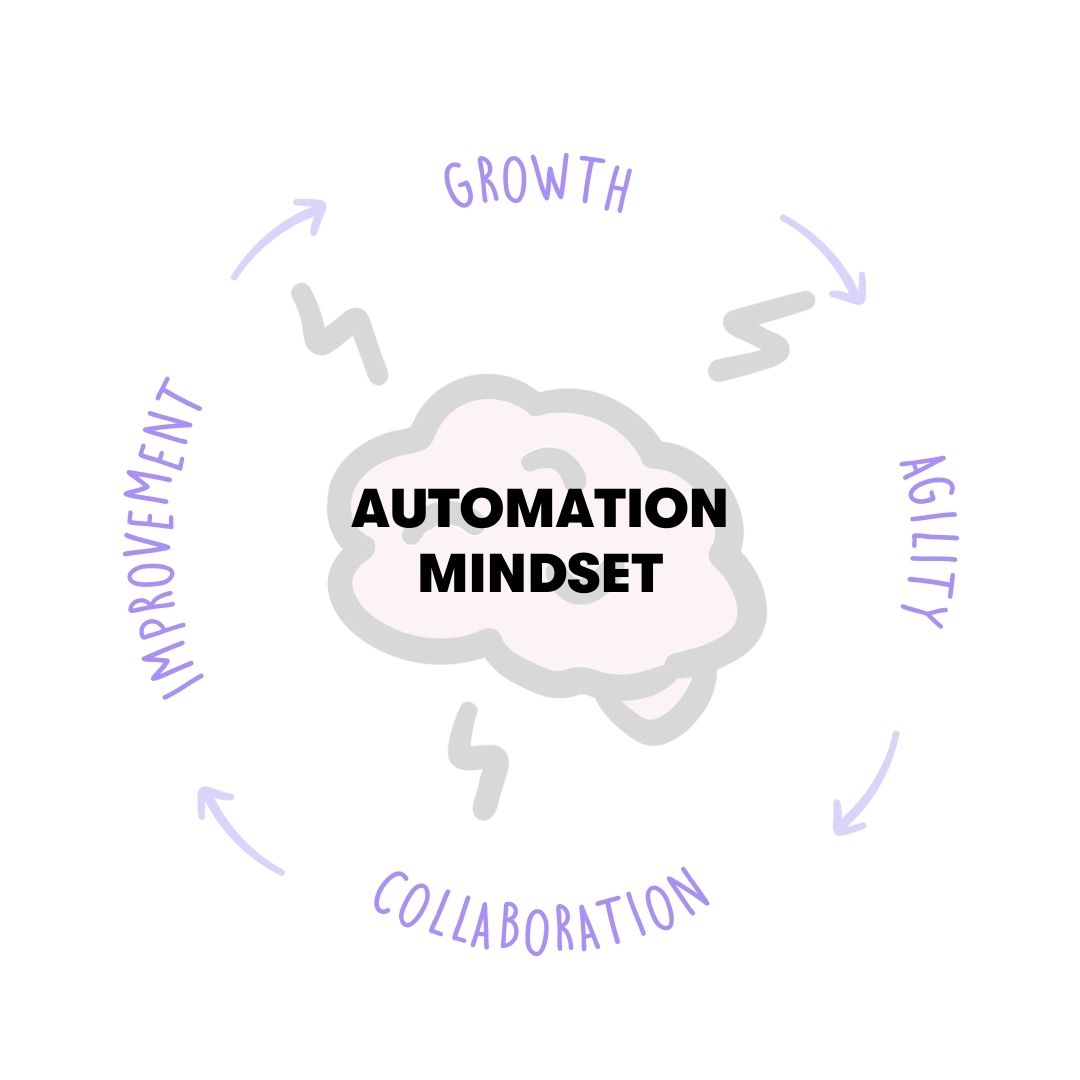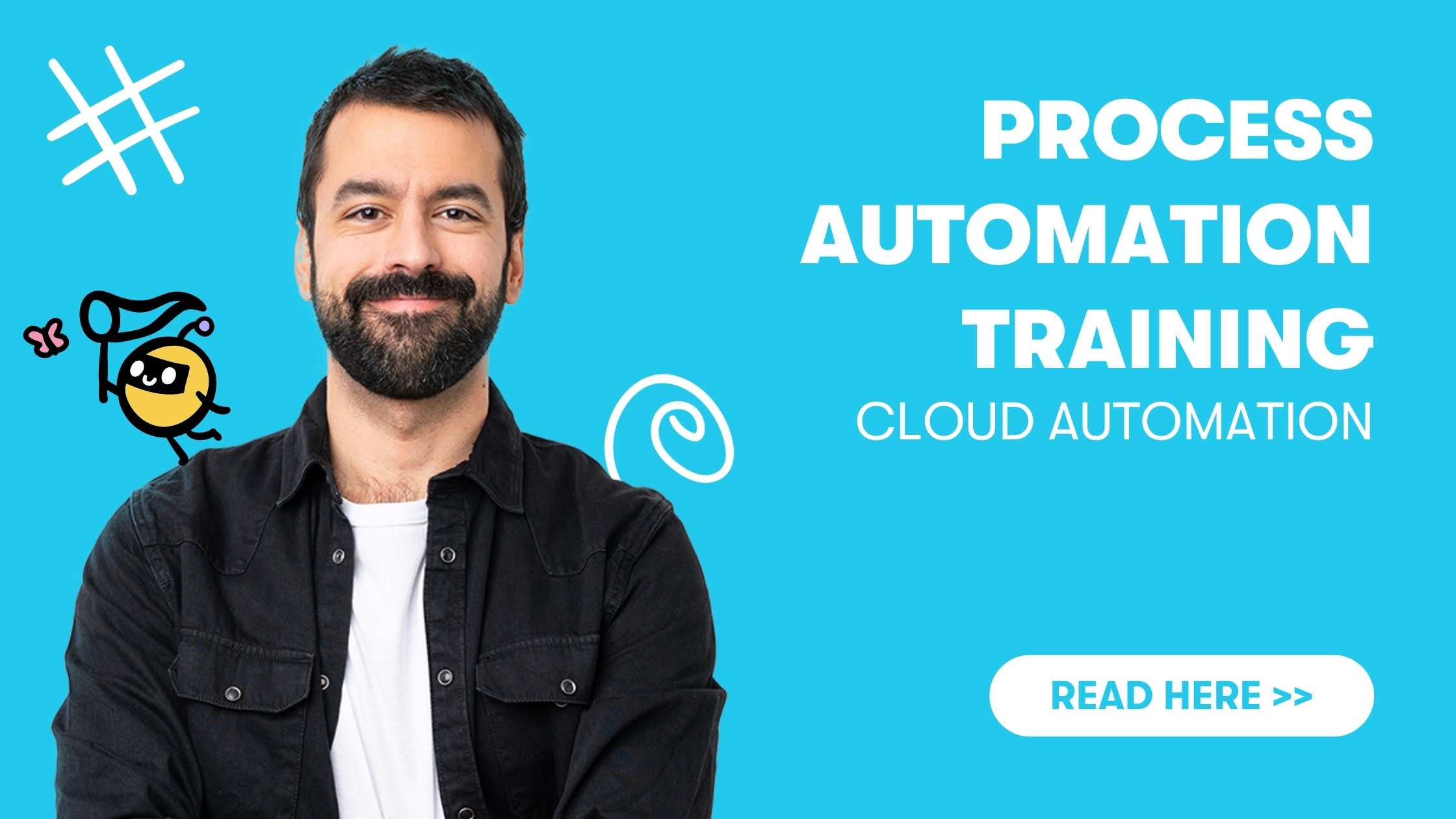Automation isn’t just learning the necessary tools and obtaining the knowledge to use them to automate processes. An individual or an organization can have a state-of-the-art automation toolbox but lack an ingredient that makes all the difference — the automation mindset.
In other words, people need to learn how to think in a certain way to truly understand how to apply automation in the best possible way.
But adopting an automation mindset isn’t something that happens overnight. First, an organization starting an automation initiative must deal with various obstacles, with the most prominent one being the fear of automation.
What Is Fear of Automation? How Is It Solved?
Whenever there’s a new technology around the corner, there’s fear. People aren’t always welcoming new ideas with arms open wide, simply because new ideas are so disruptive that people start fearing them. Automation isn’t new, but the way we use it in business has recently evolved.
It’s only natural for people to fear it. The main reason for the fear to arise is losing jobs to automation. Technically speaking, automation can replace humans in doing the boring and repetitive steps in processes, but many don’t understand that it’s just a tool used to help workers focus on more meaningful work. In reality, people just adapt to the new way of doing their jobs that requires human input while only controlling the automated processes when necessary. But, if an organization wants to start an automation initiative, it’s completely understandable that some employees may feel threatened by this.
How does one help them alleviate fear?
The answer is: By telling them how things really are and reassuring them there’s nothing to fear — only things to look forward to. Many workers might already use automation without even realizing it.
Still, you have to invest additional effort in making this change towards automation painless and fear-free. This can be done by relying on Change Management.
Change Management Saves the Day
Change Management is considered essential for starting and completing your automation initiative, which also includes educating the employees to remove fear and train them to adopt the right automation mindset.
Change Management is used whenever an organization needs to shift from one state to another and is often conducted by professionals. This shift usually refers to changing the culture within an organization. In this case, the management is required to shift an organization from a non-automation to an automation culture.
If executed properly, Change Management will be the main power behind people accepting automation and adopting an adequate automation mindset. However, one should consider that different people react differently to change, which is why an adequate response and a detailed change plan are required. Some of the critical questions that Change Managers need to ask are:
- What is changing? Is the automation initiative changing the entire culture of an organization or not? Are roles changing? Should the mindset shift?
- What is the impact of change? Why does the change need to take place now? What’s the change story you’re aiming to convey?
- What measures do you want to implement through change? What can you implement right now?
- How can you measure the success of your Change Management? Are you really implementing the change, or are you just implementing automation?
What is an Automation Mindset?
As mentioned earlier, one of the Change Management goals is to implement the Automation Mindset. Overcoming fear and learning automation is just part of the big picture. An Automation Mindset will help us understand our approach and learn how to use automation in the best possible way. More importantly, it will help us take automation into account in our day-to-day work and consider it for problem-solving.
The Automation Mindset consists of four different aspects:
- Growth Mindset
- Agile Mindset
- Collaborative Agile Mindset
- Continuous Improvement Mindset

#1 Growth Mindset
A person with a growth mindset is a person willing to grow and adapt. Some would claim that growth is an attribute of a healthy and happy mind. In the context of an automation mindset, a growth mindset is required so people can adopt automation faster and feel free when using it to provide creative solutions. Moreover, a growth mindset means being ready to take a deep dive while looking for answers and always focusing on the “why” to provide a better evaluation of a problem and potential solutions to it.
Automation is a fast-growing field, and not being ready to grow with it and adapt can lead to trotting behind.
#2 Agile Mindset
Staying flexible and being ready to provide continuous improvement is a valuable perk that can be achieved with an agile mindset. It means that users and customers should always be included in the feedback loop, maximizing customer inclusion to improve your product and service.
In the case of an automation initiative, there’ll be plenty of input from both internal and external stakeholders. A person with an agile mindset should be able to adapt to such a dynamic and get the most out of every input to make the initiative as successful as possible.
#3 Collaborative Agile Mindset
The agile mindset described above mainly takes the customer into account. However, automation will not be used for customers only but for employees as well. We always need to strive toward making automation work for employees, not against them. Automation also needs to motivate employees further by assisting them with monotonous work.
A collaborative agile mindset is all about thinking about how automation can help your co-workers.
#4 Continuous Improvement Mindset
This mindset is relevant because we live in a day and age where everything is in constant flux. Technologies evolve all the time, shaping and changing the world around us. On top of that, customer needs are constantly changing. We need to assume a data-driven approach with a clear structure and clearly-defined KPIs to ensure continuous improvement and stay up to date with the ever-changing environment.
This also applies to automation processes which need to be refined every once in a while by using tools such as process mining. They need to be updated and improved to stay one step ahead of the changing technologies and customer needs.
In short, an automation mindset requires you to apply the right improvement mindset to eliminate, simplify, and unify processes. However, that’s not possible without the right approach to automation (the right technology) and the human-centered approach, meaning to keep your customers and employees happy with your automation initiative.
Reasons for Automation
Once the fear of automation is out of the way, and you’re ready to build an automation mindset, one thing that can help you with motivation is understanding why companies use automation in the first place.

Let's take a deeper look.
- Efficiency pressure — The most obvious reason organizations rely on information is to cut costs and generate higher income. It doesn’t get simpler than that.
- Customer satisfaction — If your customers are happy with how your product or service works when powered by automation, that’s good for your business.
- Quality of processes — By introducing automation, we can reduce errors and streamline business processes.
- Employee satisfaction — By having your employees focus on more meaningful work, they will be more motivated to work.
Final Thoughts on the Automation Mindset
To sum up, there are many reasons why an organization wants to introduce automation, but it all comes down to doing business better and making people happy. However, people usually aren’t happy when facing automation for the first time, resulting in fear of losing a job and similar worries related to automation.
Because of that, organizations initiate change by referring to change management strategies. The goal isn’t to remove fear but to inspire people to adopt the automation mindset and start thinking about how automation can help them in anything they do. With the right set of tools and the right attitude towards automation, businesses can do wonders.









